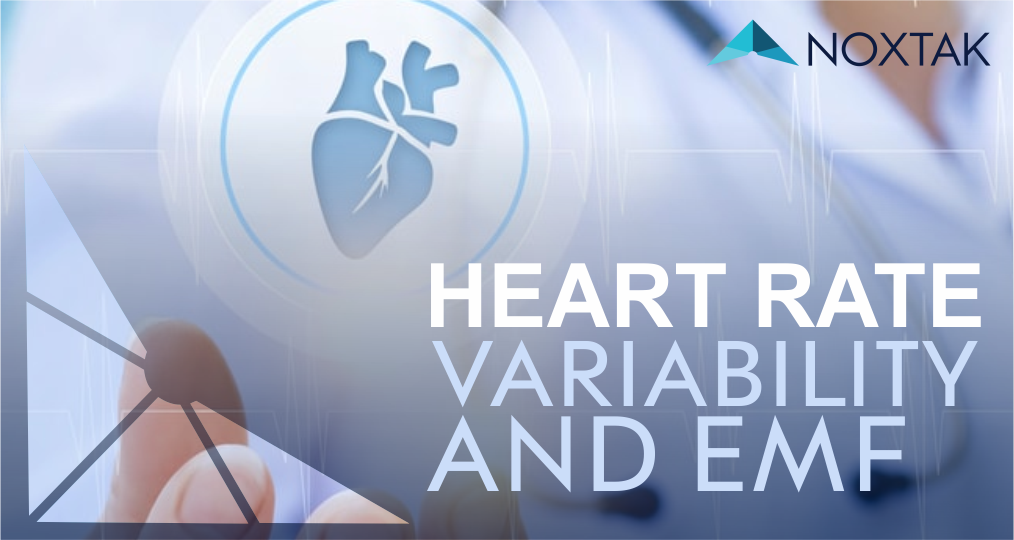
One of the many physical factors that are affected by constant exposure to electromagnetic fields is heart rate variability (HRV). Today we tell you more about this phenomenon.
With the expansion of smart technologies to almost all areas of our lives, today it is very easy to measure and track all kinds of information related to our health and well-being. Thanks to smart devices, today we can control our weight, blood pressure, number of steps, calories, heart rate and blood sugar from comfort. Recently, some researchers have also started to use an interesting marker for resistance and behavioral flexibility, this is called heart rate variability (HRV).
Have you ever wondered what’s the impact of a stressful day in your health? How will you perform in your morning race tomorrow? Is there anything you can do today that improves your ability to be better tomorrow? The HRV may be the data that could help you answer all these questions.
Now, did you know that constant exposure to electromagnetic fields (EMF) could also affect the value of the HRV? Today we want to tell you more about heart rate variability and how it relates to exposure to EMF.
What is heart rate variability?
As popular as the metaphor is, a healthy heart doesn’t beat as often as a metronome, but actually changes its rhythm with each beat. This constant variation in milliseconds between the heartbeats is known as heart rate variability (HRV).
Some situations result in an increase in variance (high HRV), while others cause the intervals between heartbeats to remain more constant (low HRV). You may not be aware of these subtle variations, but they reflect your heart’s ability to respond to different situations.
HRV can react to stress and illness before the resting heart rate, making it one of the most powerful signals in the human body, providing useful information on stress levels, recovery status, and general well-being.
HRV as a measure of general well-being
The heart rate variability measurement is an ideal measurement to verify a person’s general well-being. First, keep in mind that the heart is a 2.4-watt source of electromagnetic energy, and its oscillations can be measured in the smallest cells of the body. All the rhythms of life are reflected in the heartbeat; so, if these rhythms are in harmony, then we experience a feeling of well-being.
For example, HRV is used to monitor the body’s performance in physical training and recovery capacity. For this, heartbeat-to-heartbeat variations are analyzed, and by accurately measuring the time interval between heartbeats, the detected variation can be used to measure psychological and physiological stress and body fatigue during training.
Generally speaking, the more relaxed and unburdened (fatigue free) the body is, the more variable the time between beats. The HRV data can indicate the impact of fatigue due to previous exercise sessions, hydration levels, stress, and even the degree of performance anxiety, nervousness, or other external stressors.
Studies have shown that heart rate variability varies among individuals based on the left ventricular size (inherited trait), level of fitness, body position, temperature, humidity, altitude, mood, hormonal status, drugs and stimulants, gender and age.
The relationship between HRV and electromagnetic fields
As we have previously mentioned, our body is powered by an endless number of chemical and organic reactions that originate from an electrical impulse; And this is especially important when we talk about the heart, an organ that generates its own electric fields and whose well-being can also be measured by the state of its electrical activity (electrocardiogram).
The vegetative nervous system dynamically controls the internal balance of the organism depending on the momentary external and internal loads. The heart reacts to perceptible and imperceptible stimuli that are generated (such as electromagnetic radiation) and acts on the vegetative nervous system. The variability of the heart rate of a healthy person is based, essentially, on the optimal interaction between the sympathetic and parasympathetic components of the vegetative nervous system to adapt.
Spontaneous stimulation of the vegetative nervous system by electromagnetic radiation and energy fields is generally well below the physically noticeable threshold value. However, the most modern measurement systems also record the smallest reactions in the control of the vegetative nervous system, particularly using the heart rate variability parameters.
As mentioned, heart rate variability can be affected by many physical (exercise, illness) or external elements (stress and environmental factors). In the case of the debilitating or damaging effects of high-frequency mobile telephony, radiation, and low-frequency electrosmog, these are commonly recognized by the nervous system as vital threats. This means that, if the body is exposed to constant charges due to field interference, it will not be able to normalize stress parameters and, therefore, there will be a reduction in the heart rate variability and the body’s ability to adapt to changes.
For years, we have dedicated ourselves to research and develop solutions for Electrosmog that are accessible, scalable, friendly, beneficial and that stimulate the general well-being of the environment and the human body without the need to stop technological development. Our SPIRO solutions were certified by the IGEF by measuring the heart rate variability of various test subjects, which was significantly improved through the use of this material as protection against electromagnetic contamination (see articles SPIRO DISC
L5 Pro: a powerful solution for the highest demands and SPIRO DISC L4: A certified and powerful solution).
Soon, we will continue to share with you more information of interest like this. Subscribe to our newsletter using the form at the bottom of this page to receive these news. We invite you to visit our products section to learn more about our solutions.
